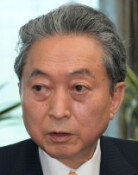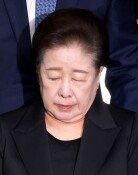Oil Security
The first oil shock hit the world in October 1973, when oil producing countries in the Middle East raised prices fourfold in displaying resource nationalism. South Korea, which was rumored to face a crisis in the global financial market, weathered the crisis with the dollars earned by South Korean builders in the Middle East. The second oil shock in 1978 brought disaster, however. The Busan-Masan Protest of April 1979 and the assassination of President Park Chung-hee in October that year were followed by the coup détat in December 1980 and the Gwangju Pro-democracy Movement five months later. The country failed to prepare for the second oil shock because it was addicted to dollars earned in the Middle East, plunging the economy into recession.
Developed economies that experienced recession from the first oil shock began storing oil in case oil producers used the commodity as a weapon. The U.S. Ford administration enacted a law on energy policy and conservation in 1975 and stored strategic petroleum. Thanks to oil stored in the underground caves of salt mountains in Texas and Louisiana, the U.S. survived the second oil shock despite being 60 percent dependent on foreign oil. Oil reserves are so important that the International Energy Agency recommends that a country has a reserve supply good for 90 days.
Competition for oil is more intense in Northeast Asia, which is seeing demand soar due to industrialization faster than any other region in the world. China, which surpassed Japan to become the worlds second-biggest consumer of oil in 2003, is giving financial assistance to Mideast and African oil producers to secure resources. China is also building large-scale oil reserve facilities with an aim of conserving 90 days worth of strategic petroleum by 2015. North Korea completely depends on Chinas oil supply. The North espouses hollow slogans such as juche (self-reliance) or just between us, but Beijings influence over Pyongyang has increased. It is deplorable that the Kim Il Sung dynasty has reigned half of the Korean Peninsula for a long time, bringing about economic collapse to the North.
South Korea has increased its oil reserve facilities since the 1980s and completed the Ulsan oil reserve base, whose capacity is 6.5 million barrels of crude oil. A combined nine oil reserve facilities can store 146 million barrels of fuel. This is enough to last 158 days, longer than that of the U.S. (142 days) and Japan (151 days). A country that asked oil producers for help during the oil shock has upgraded its fuel reserves in just three decades.
Editorial Writer Park Yeong-kyu (parkyk@donga.com)







